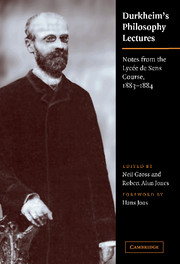Book contents
- Frontmatter
- Contents
- Foreword
- Translators' Note
- Acknowledgments
- Introduction
- Part I Preliminary Matters
- Part II Psychology
- Part III Logic
- 38 Introduction. On Logic
- 39 On Truth. On Certainty
- 40 On Certainty (Conclusion)
- 41 On False Certainty or Error
- 42 Skepticism
- 43 Ideas. Terms. Judgments. Propositions
- 44 Definition
- 45 On the Syllogism
- 46 On Induction
- 47 Fallacies
- 48 On Method
- 49 Method in the Mathematical Sciences
- 50 The Methodology of the Physical Sciences
- 51 Method in the Natural Sciences
- 52 Method in the Moral Sciences
- 53 Method in the Historical Sciences
- 54 Language
- Part IV Ethics
- Part V Metaphysics
- Appendix: Biographical Glossary
- Index
49 - Method in the Mathematical Sciences
Published online by Cambridge University Press: 21 October 2009
- Frontmatter
- Contents
- Foreword
- Translators' Note
- Acknowledgments
- Introduction
- Part I Preliminary Matters
- Part II Psychology
- Part III Logic
- 38 Introduction. On Logic
- 39 On Truth. On Certainty
- 40 On Certainty (Conclusion)
- 41 On False Certainty or Error
- 42 Skepticism
- 43 Ideas. Terms. Judgments. Propositions
- 44 Definition
- 45 On the Syllogism
- 46 On Induction
- 47 Fallacies
- 48 On Method
- 49 Method in the Mathematical Sciences
- 50 The Methodology of the Physical Sciences
- 51 Method in the Natural Sciences
- 52 Method in the Moral Sciences
- 53 Method in the Historical Sciences
- 54 Language
- Part IV Ethics
- Part V Metaphysics
- Appendix: Biographical Glossary
- Index
Summary
There are two distinct parts to mathematics, as there are to all the sciences. The truths that together compose mathematics must first be invented and then demonstrated. Consistent with this, there are two parts to the method of mathematics: one pertaining to invention, the other to demonstration.
It might seem at first glance that invention has no place in mathematics, for in mathematics truths are all deduced from one another. But there's a difference between geometry as taught and geometry as practiced. Once a theorem has been found, of course, the way to demonstrate it is to tie it to another that's previously been demonstrated. But first the theorem has to be found, and thus demonstration presupposes invention. What's the basis for the faculty of invention? The answer is – imagination. Those who invent are endowed with the gift of imagination, while others try to understand and develop their inventions. There is no fixed rule for the use of the imagination. Only one is imposed on the inventor – to submit his discovered proposition to a rigorous verification.
Invention represents the synthetic part of the mathematical sciences. But to demonstrate propositions once they've been found, they must be tied to previously demonstrated truths by means of the laws of deductive reasoning. Mathematical demonstration is carried out with the aid of definitions, axioms, and deduction.
Definitions are the material of the demonstration, which merely develops whatever is contained in the definition.
Axioms are the regulative principles of mathematical reasoning.
- Type
- Chapter
- Information
- Durkheim's Philosophy LecturesNotes from the Lycée de Sens Course, 1883–1884, pp. 207 - 208Publisher: Cambridge University PressPrint publication year: 2004



